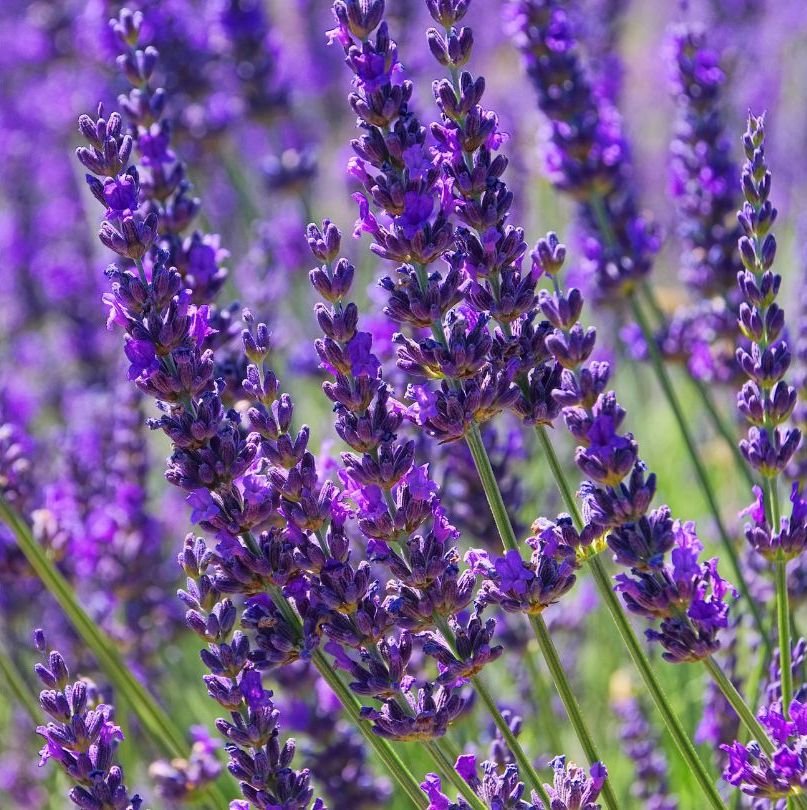Harnessing the power of beneficial predators – an expert gardener Huw Richards’ guide to natural pest control
Maintaining a healthy and thriving garden requires effective pest management strategies. While traditional methods often rely on pesticides, an alternative and natural approach involves harnessing the power of beneficial predators.
In the UK, we typically rely on a yearly reset during Winter (when freezing temperatures control pest populations), but as weather patterns become more unpredictable, we need to look at other options to manage pest numbers including attracting a variety of predatorial insects and creatures to our gardens by planting specific crops.
Here, expert gardener Huw Richards explores a selection of crops that can act as magnets for natural predators, such as parasitic wasps, ladybirds and hoverflies, which not only benefit your garden in their adult form, but are ferocious and hungry predators as larvae, offering a sustainable and organic solution to pest control.
1. Nectar-rich flowers
One of the most effective ways to attract beneficial insects is by incorporating nectar-rich flowers into your garden. These vibrant blooms offer a valuable food source, enticing a wide range of predators that feed on pests like aphids, blackfly, slugs and caterpillars.
Popular choices in the UK include:
Calendula: Also known as pot marigold, Calendula flowers attract ladybirds, hoverflies, and lacewings. Their bright orange and yellow petals are not only visually appealing but also provide a nectar-rich feast for these helpful insects.
Borage: With its beautiful blue star-shaped flowers, borage is a favourite of mine and a favourite among bees and hoverflies. Its nectar acts as a magnet, drawing these pollinators and pest predators to your garden.
Oxeye Daisy: A cheerful wildflower with white petals and a yellow centre, this flower attracts hoverflies, ladybirds, and bees, all of which contribute to natural pest control and pollination. Oxeye Daisy is well-suited to meadow-style gardens or wildflower areas.
2. Umbelliferous plants
Umbelliferous plants, characterised by their umbrella-like flower clusters, are particularly effective at attracting parasitic wasps and hoverflies, which play a crucial role in controlling garden pests. Here are some notable examples:
Fennel: With its feathery foliage and aromatic scent, fennel is a magnet for ladybirds and also hoverflies, whose larvae feast on aphids and other garden pests. Planting fennel in your garden provides a hospitable environment and great food source for these beneficial insects.
Dill: Dill is not only a culinary herb but also a powerful ally in pest management. Its yellow flowers attract parasitic wasps, which lay their eggs inside harmful insects such as aphids, effectively eliminating their populations.
Angelica: With its large, rounded flower heads, this striking plant attracts a diverse range of beneficial insects like parasitic wasps, ladybirds, and hoverflies, which contribute to a balanced ecosystem by preying on common garden pests.
3. Herbs and Alliums
Many common herbs and alliums are great for their uses in the kitchen but also for their ability to entice beneficial insects. Consider incorporating the following into your garden:
Coriander: This versatile herb attracts hoverflies and predatory wasps, making it an excellent choice for natural pest control. Coriander can be planted both in beds and in containers, offering flexibility in garden design. Every part of the plant can be enjoyed in the kitchen too, so once the flowers are done supporting a host of beneficial insects, harvest the prized green seeds for culinary uses.
Chives: The delicate purple flowers of chives are highly attractive to pollinators such as bees and hoverflies. By planting chives, you provide a food source for these beneficial insects while enjoying a flavoursome addition to your culinary endeavours.
Garlic: Apart from its pungent flavour and health benefits, garlic has another valuable role to play in the garden, deterring a wide range of pests while attracting ladybirds, which feed on aphids and other destructive insects.
And a few more honourable mentions…
Lavender: These fragrant flowers are highly attractive to insects like ladybirds, hoverflies, and lacewings so planting them in your garden not only adds beauty and aroma but provides a food source for these predators.
Sunflowers: Delightful to look at, sunflowers also act as beacons for beneficial insects. Their large, bright flower heads attract predators like ladybirds and parasitic wasps. Choose varieties with open centres, as they are more accessible to insects.
Dandelion: While some consider dandelions as weeds, they are actually valuable food sources at the beginning of the year when there aren’t many floral options available for nectar loving beneficial insects. Allowing a few dandelions to grow in your garden can help attract and sustain a population of ladybirds.





